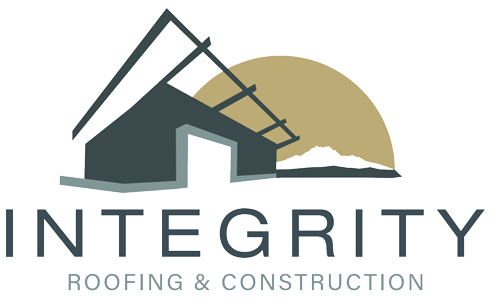Getting your roof ready for the Fall and Winter seasons is one of the best things you can do for your investment into your new or existing roof. Even a good roof can leak if not taken care of.
1. Clear Roof Debris
Identify any areas with excessive material damming. Material damming in any area causes water to pool and even the best roof installs to leak. Moss, algae, or piles of leaves and debris – conditions notorious for causing water damage and costly leaks. These areas can be managed with a couple steps.
You don’t want leaves and debris from the harsh PNW climate sitting on your roof all winter.
This speeds up the eventual deterioration of your roof and can easily knock a few years off your roof, but this is avoidable with the steps we’ll walk you through below.
Make sure there aren’t any overhanging limbs from nearby trees.
Help prevent further piles from accumulating by thinning them out or trimming them back. You can use a leaf blower to remove any loose debris.
If you have asphalt shingles, just make sure you blow in the direction your shingles go, not against it. You could risk blowing up and under them and depending on how brittle they are could damage your roof
2. Clear Gutter Debris
One of the worst things for your roof is having your gutters completely full of leaves and debris.
This can affect your roof negatively and if you don’t address it, the debris clogs up the gutters and drain pipes resulting in standing water and eventual rot.
Standing water can also be detrimental because of mosquitos and other insects breeding in standing water. You want your roof to drain properly to ensure a long life because let’s be honest, who WANTS to spend all that money on a new roof…
Use gloves and a bucket and grab any debris out of your gutter. You can use tools to scrape it out of hard-to-reach areas if you need to. The point is to make everything free of blockage to work properly.
Rinse with your garden hose once complete to make sure the water is draining properly.
3. Get Rid of Moss
The most effective roof moss killer is Sodium Percarbonate. It’s an easy to apply granule which, when mixed with water, produces oxygen.
It’s this reaction that breaks down the small roots (rhizoids) which moss needs to feed. It also has the added benefit of killing off the spores which the moss releases in order to reproduce, therefore removing the chances of moss multiplying and populating your roof.
As a rough guide, 22lbs of Sodium Percarbonate will treat the roof of an average size house. It should take half to one day to apply depending on the ease of access.
Dampen The Area: Sodium Percarbonate is best applied in damp conditions. If it’s not raining use a garden hose to dampen the roof, this enables the granules to stick to the shingles and also starts the oxygen producing process.
Spread the Granules: Wearing gloves, spread the sodium percarbonate by hand over the whole roof.
Sodium Percarbonate Starts to Work: After about 15 minutes the roof will turn white as the water reacts with the Sodium Percarbonate. Sometimes there is a white residue left which is the by-product of the water and oxygen reaction. This is soda ash, an inert substance which will get washed down by the next rain shower.
What Happens Next?: Over the following days the moss will turn brown and die. Over time it will slowly disintegrate. Sodium Percarbonate is a powerful cleaner so your shingles will start to look cleaner as it works its’ magic.
You can find Sodium Percarbonate HERE or check locally.
